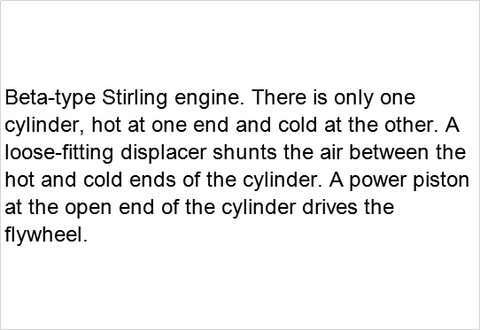
What is Stirling Engine ?
Share
A Stirling engine is a heat engine that works by cyclic compression and expansion of air or other gas (the working fluid) at different temps, such that there is a net conversion of heat energy to mechanised work.




More specifically, the Stirling engine is a closed-cycle regenerative heat engine with a permanently gaseous working fluid. Closed-cycle, in this situation, means a thermodynamic system where the working fluid is permanently contained within the system, and regenerative describes the use of a specific type of internal temperature exchanger and thermal store, referred to as regenerator. Strictly speaking, the inclusion of the regenerator is actually differentiates a Stirling engine from other closed cycle heat engines.
What are the Usage for Stirling engines?
1, Cogeneration (CHP)- In a cogeneration unit, a Stirling engine can use the waste heat caused by the second law of thermodynamics. This waste heat can be towards powering the Stirling engine for industrial or agricultural processes.
2, Solar energy generation- Placed at primary of a parabolic mirror as seen in Below Figure, Stirling engines can convert solar power to electricity with an efficiency better than some photovoltaic cells.

3, Submarines- Stirling powered submarines can stay submerged much longer than conventional submarines. Swedish ship builder Kockums first installed Stirling engines in submarines, and with them the submarine doesn't have to surface to recharge its batteries, extending its submersion from days to weeks.
Nuclear power plants- There is potential for Stirling engines to replace steam turbines in nuclear reactors, and could increase the plant's efficiency and reduce radioactive by-products. These would use liquid sodium as coolant, and remove the need for water anywhere in the cycle.

4, Educational demonstration- A low temperature difference Stirling engine will run on any low temperature difference, for example the difference between the palm of a hand as seen in Figure 4. (A Low temperature differential (LTD) Stirling engine, can generate around 1 W of power from a person's palm.)


Enginerc will introduce you with different types of Stirling Engines Models, which will be both perfect for collection or learning.